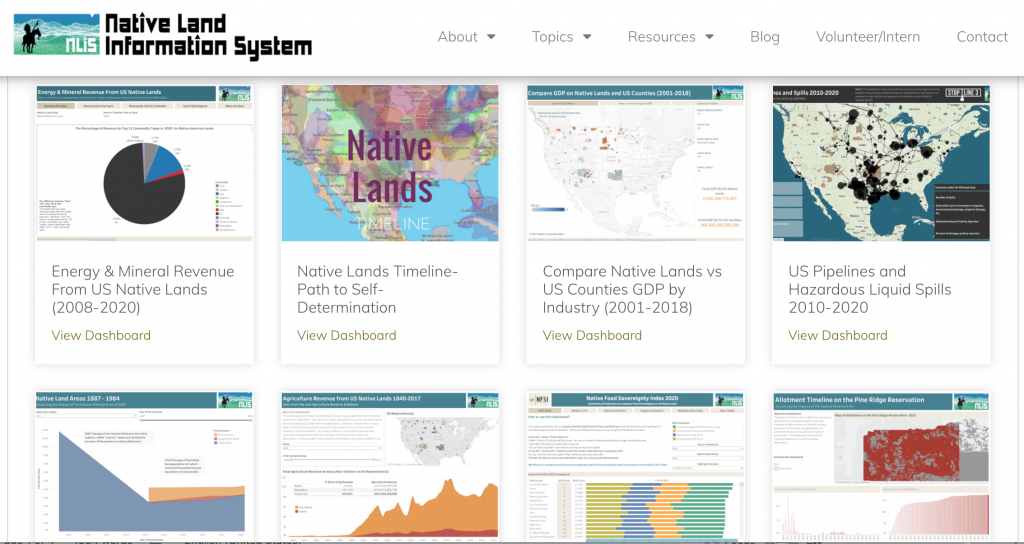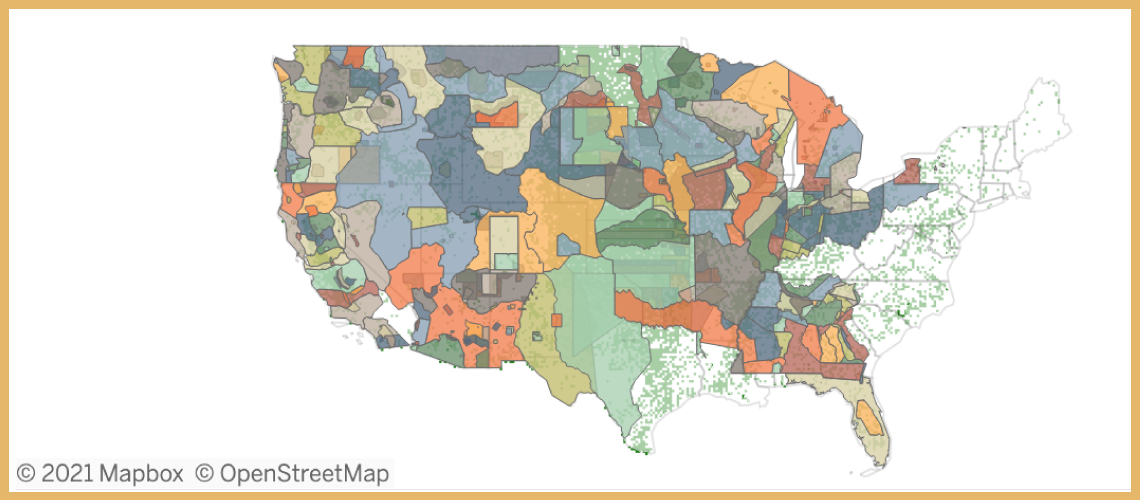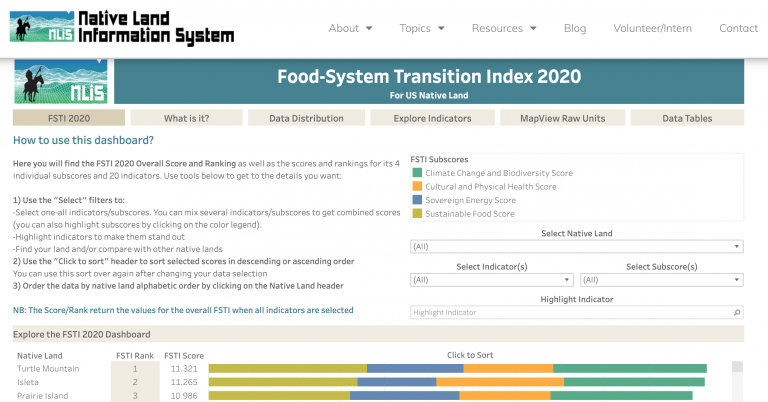Guest post by Aude Chesnais, Senior Researcher for the Native Lands Advocacy Project and SoGES Visiting Fellow
Since colonization, 200 years of institutional efforts to commodify land and agriculture on US Native lands have profoundly reshaped indigenous livelihoods. By treaty law, Native nations are sovereign, but in practice, much land management is still controlled by the Bureau of Indian Affairs. Additionally, due to these structural challenges to sovereignty, Native nations struggle to obtain access to the most basic data regarding their land status and management. This pattern is maintained throughout public datasets, which are seldom released for Native geographies. The USDA has, in the past few years, started to release the Census of Agriculture for American Indian Reservations, but much work is still needed to render land use, agriculture, and climate data accessible to tribes for planning.

After completing my Ph.D. in sociology from Colorado State University in 2017 and having worked with Native communities on grassroots community development support, I was approached in 2019 by long-established Fort Collins-based non-profit, Village Earth, to work as a senior researcher for the new Native Lands Advocacy Project, which aims to address the gaps in Native land research. In partnership with the Indian Land Tenure Foundation, we recently launched the Native Land Information System: a repository for land, agriculture, and climate data designed to support tribes’ sustainable land planning and a hub for innovation in Native land research. With increasingly accessible GIS technology, it becomes easier to process tasks that might have been impossible a while back. To complete this work, I was also accepted as a Visiting Fellow at the School of Global Environmental Sustainability, which allowed me to maintain a connection with academic research and access the formidable outputs and people advancing the field of sustainability at CSU.
Initially, I was hired to design a Food Sovereignty Index, which aimed to integrate some of these datasets into an index meant as a baseline for planning. The goal was twofold: 1) gathering interconnected measures of healthy and sovereign food-systems into a first-of-its kind index to serve as a baseline for planning, and 2) establishing these measures from Indigenous perspective on food sovereignty while within the constraints of public data availability. I started by gathering Indigenous food scholarship and practitioner information into a meta-analysis of Native food sovereignty. While definitions vary, much overlap exists between tribes and their relationship with the land via complex interspecies kinship connections, and an overall much more interconnected man-nature model than in mainstream non-Native food-systems. These kinship models impact land management practices, which are embedded within cultural and spiritual meaning and practices, and many communities have kept their traditional ecological knowledge, which remains key to establishing locally relevant sovereign food-systems.
After establishing these guidelines, I browsed several hundred datasets to find the most relevant fit to render such high level of interconnection within food-systems. Data was limited and mostly available in relation to commodified agriculture. After much research and data processing, I managed to create an index which gathers 20 indicators of healthy food-systems under four sub-scores: 1) Sustainable Food, 2) Climate Change and Biodiversity, 3) Sovereign Energy, and 4) Cultural and Physical Health. In order to complete it, I had to get acquainted with a variety of technical literature, learn GIS processing, consult with area experts for specific indicators and with a data visualization expert to compile the indicators into their final dashboard.
After receiving feedback from Native food practitioners, it appeared obvious that the index could not possibly represent the diversity and nuances of Native food sovereignty. At best, and within current data limitations, what these variables provide is a more interconnected way to look at food-systems and measure their transitions towards healthier, more sustainable, climate and socially resilient food-systems. Thus, the Food-System Transition Index was born. In summary, the FSTI is an exploratory aggregated measure which provides information about the state of Native food-systems, which can serve as a base score to monitor policy impact. All data comes from already published and publicly available datasets aggregated at the reservation level to make it accessible and useful to Native users. It does not claim to represent the complexity of Native food-systems or food sovereignty.
The final dashboard displays the overall index into a dashboard where data can be filtered by indicator, sub-score, and by selected Native land areas. I also produced subsequent dashboards that look more deeply into the Top 10 FSTI Native lands, along with a storymap of Native land history and the potential role of tools such as the FSTI. It remains a work in progress that needs to be modified through user feedback and needs. Among future developments, we are currently working to form a partnership with Native-led organizations to even better adapt the FSTI variables and other Native Land Information System data for natural resource management and climate planning. We are also collaborating with Native land researchers at Yale School of the Environment, Michigan State University, and Kansas State University to help reconstruct the puzzle of Native land history. To learn more, you can find us all soon at the Native Land Session of the upcoming American Association of Geographers summit (April 7-April 11). The Native Land Information System reflects the potential of data innovation to deconstruct structural oppression. While Native food sovereignty cannot yet be fully comprehended by existing datasets, research innovation can mitigate and help de-commodify Native lands towards fully sovereign and healthy food-systems.







